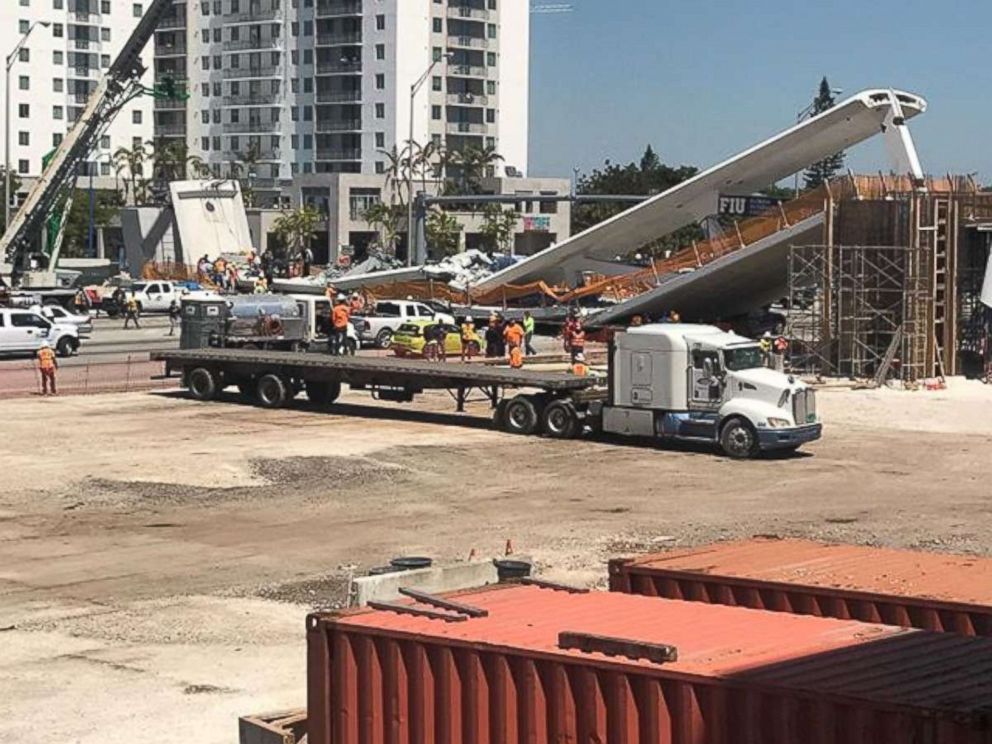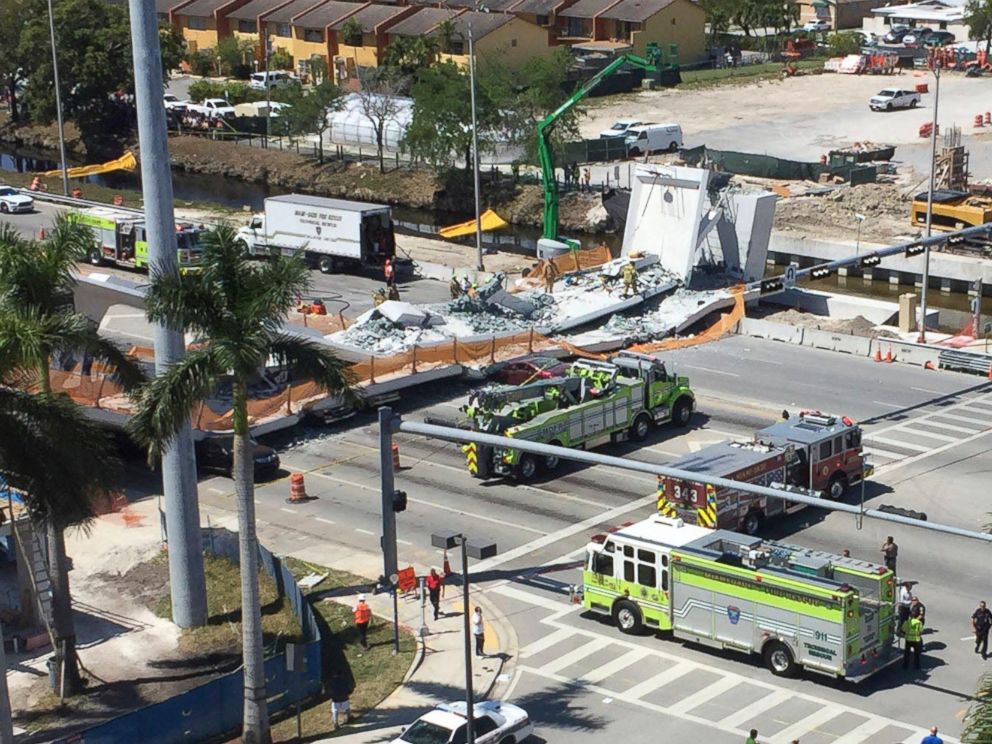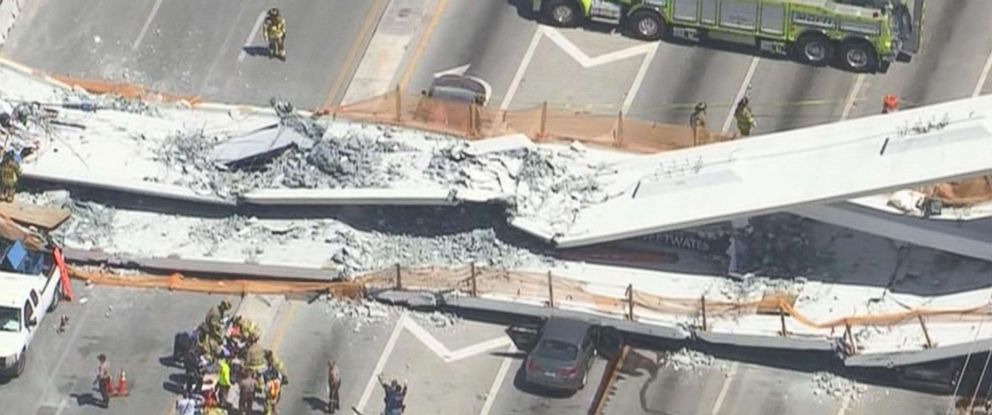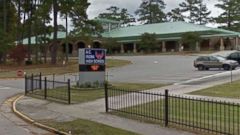An emerging way of installing bridges was touted as an "engineering feat," a model for the future with safety at the forefront.
Interested in Florida Bridge Collapse?
Add Florida Bridge Collapse as an interest to stay up to date on the latest Florida Bridge Collapse news, video, and analysis from ABC News.Now just four days after being installed using that method, a bridge connecting a college campus to a nearby residential area collapsed over a busy highway, killing several people.
The bridge was built in full before being rotated and moved into place over a portion of 8th Street, US 41, in just a few hours.
The 174-foot, 950-ton section of the bridge was built to the side of where it was eventually rotated over eight lanes of the highway, according to a press release announcing the installation of the bridge.
"FIU is about building bridges and student safety. This project accomplishes our mission beautifully," said FIU President Mark B. Rosenberg said in a statement earlier this month. "We are filled with pride and satisfaction at seeing this engineering feat come to life and connect our campus to the surrounding community where thousands of our students live."
The pedestrian bridge was intended to provide a safe passage for students from Florida International University, which has its campus on one side of the highway, to a neighborhood called Sweetwater, where thousands of students live.
 magno.meza/Instagram
magno.meza/Instagram
The bridge was not yet open, but the installation process had been celebrated as an engineering success.
The press release said the FIU-Sweetwater UniversityCity Bridge was the largest pedestrian bridge moved using self-propelled modular transportation. That method involves a large vehicle with a flat platform that is used to move large segments of pre-constructed materials that are then lifted into place.
"It will be the largest pedestrian bridge move via a Self-Propelled Modular Transportation (SPMT) in U.S. history," according to a fact sheet released by FIU and the City of Sweetwater.
The release quotes Atorod Azizinamini, the chair of FIU's civil and environmental engineering department, and the director of the school's Accelerated Bridge Construction University Transportation Center, which specializes in this type of construction.
"Building the major element of the bridge – its main span superstructure – outside of the traveled way and away from busy Eighth Street is a milestone," Azizinamini said in the press release.
 Roberto Koltun/The Miami Herald via AP
Roberto Koltun/The Miami Herald via AP
The bridge cost $14.2 million and its funding came as part of a $19.4 million grant from the U.S. Department of Transportation. Construction of the bridge began last spring; the bridge was expected to be completed early next year.
It was designed to withstand a Category 5 hurricane and have a design life that would exceed 100 years, according to the fact sheet.







































